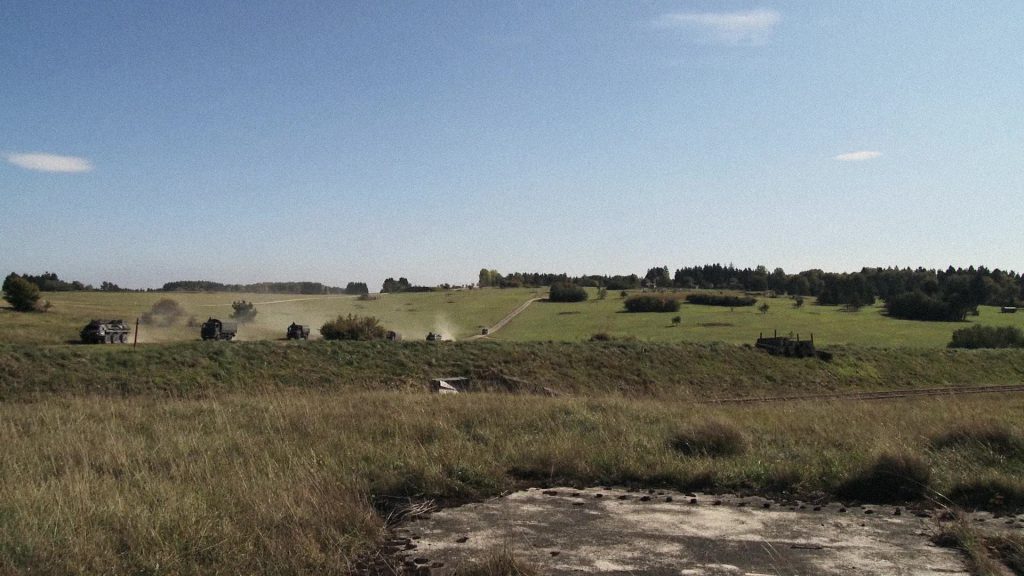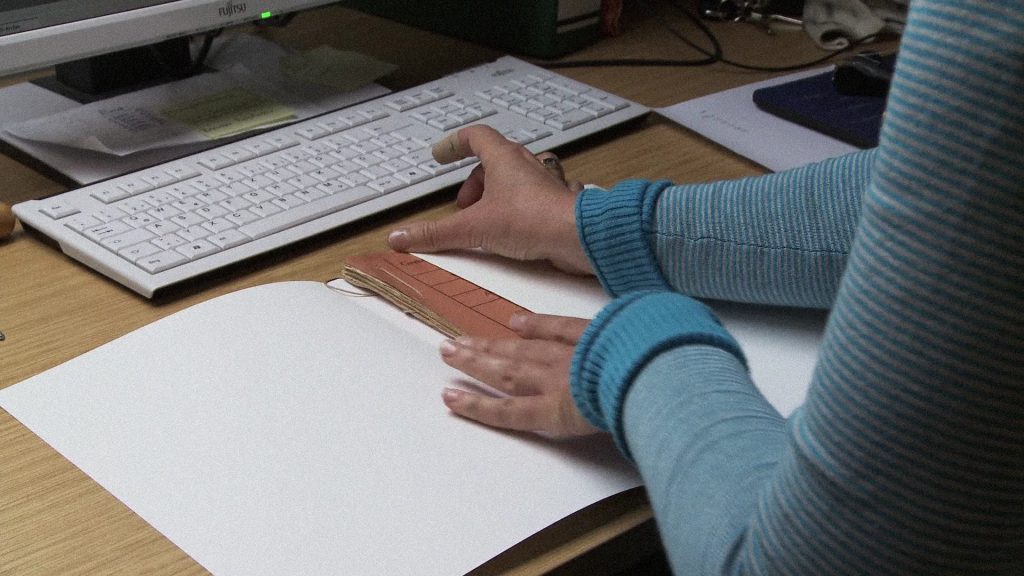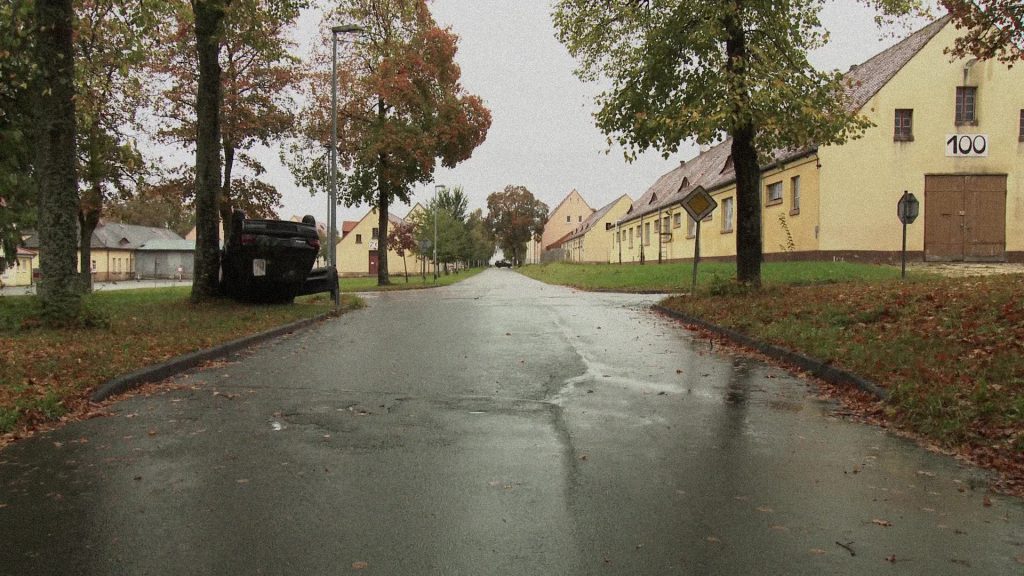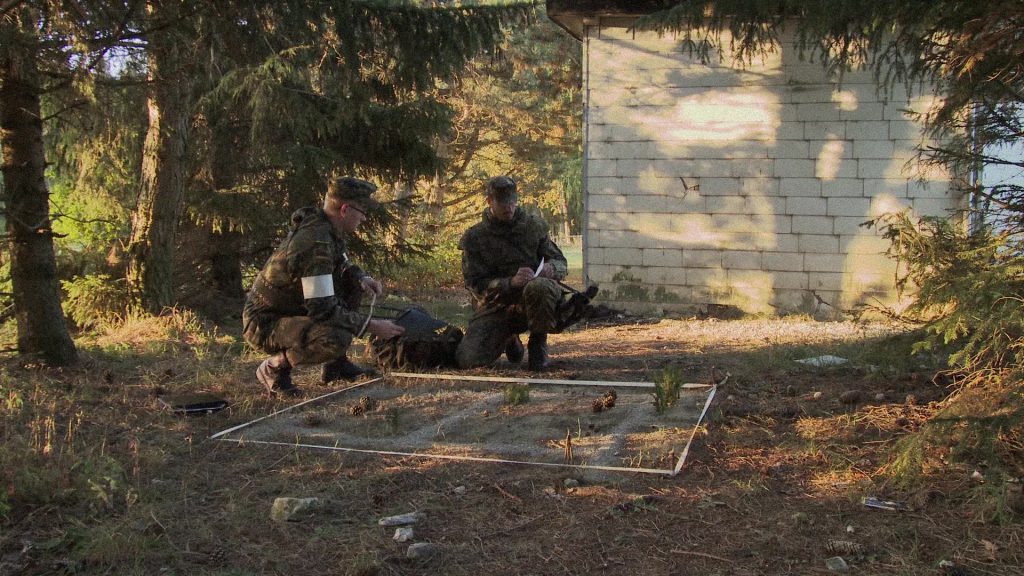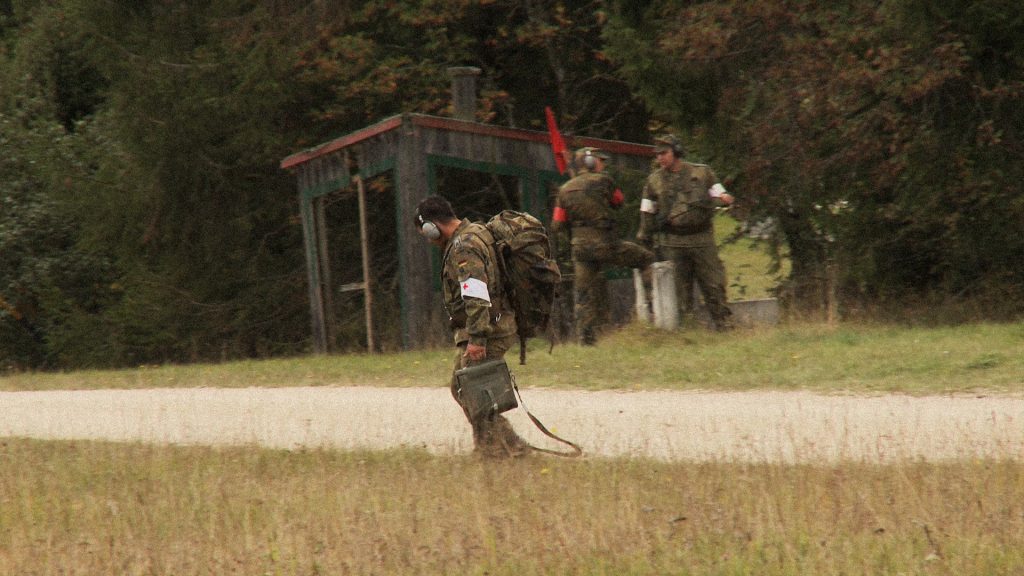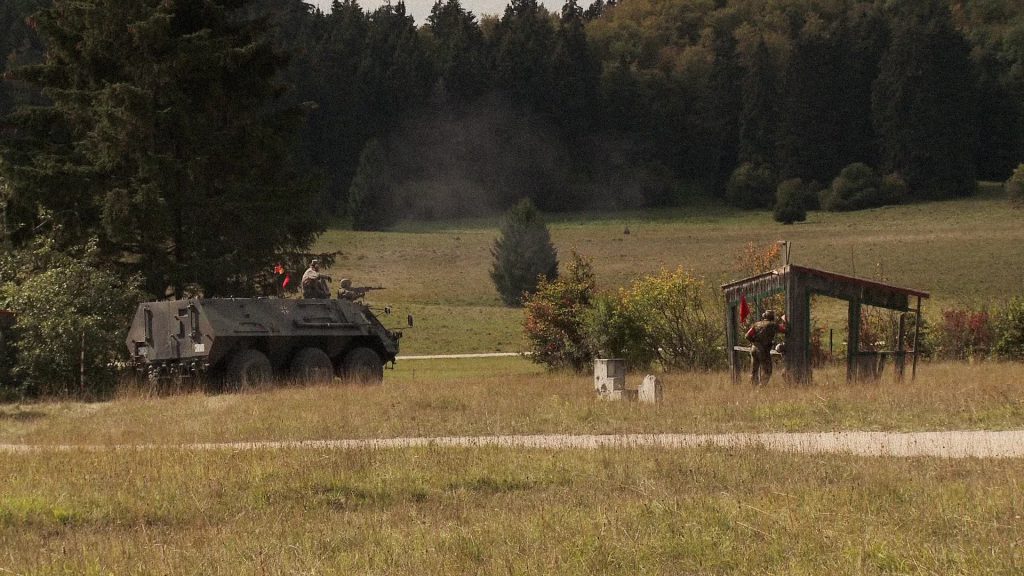Documentary & Videoinstallation, D 2012/2013, DCP 2k flat, 92 Min. & 17 Min.
DETECTION. Consideration of past, present and future of a small village in Germany. For over a century — wars and states went by — the military is the largest employer. The everyday life of the community is inextricably linked to the events on the nearby military training area. Diaries, daily instructions, petitions, letters and photos tell about daily life at different times.
Author & Director: KATHRINA EDINGER & EDUARD STÜRMER et al.
Cinematography: MARCO KUGEL & EDUARD STÜRMER
Editing & Color Grading: EDUARD STÜRMER
Sound Design & Mixing: JONATHAN PAULI
Videoinstallation: MARCO KUGEL & EDUARD STÜRMER
Production Company: KARLSRUHE UNIVERSITY OF ARTS AND DESIGN, UNIVERSITY OF MUNICH (in cooperation with), UNIVERSITY OF COLOGNE (in cooperation with), GERDA HENKEL FOUNDATION (in cooperation with)
Buy now & Watch Online
Trailer Videoinstallation Ortung Drift I
Radiofeature Ortung – Vermessung eines Militärstandorts
Book Release Ortung – die multimediale Vermessung eines Militärstandortes: Postmoderne Geschichtsschreibung im Dokumentarfilm.
REVIEWS
“Hervorragende Arbeit. Ein besonderer Beitrag zu einer zeitgemäßen Erinnerungsarbeit, der durch künstlerische und kulturwissenschaftliche Annäherungsformen an eine schwierige Regionalgeschichte überzeugt. Darüber läd der Film durch seine innovative Filmsprache grundsätzlich zur Reflexion über das Verhältnis von Film und Geschichte ein.”
Stiftung Erinnerung Ulm – Für Demokratie, Toleranz und Menschenwürde, April 2013
“Der gerade in Deutschland problematische Prozess der Historisierung unserer Vergangenheit kann, kann, muss aber nicht, ein sehr spannender Gegenstand von Erzählung, von Kunst sein. Wenn man das alles noch in sehr schöne Bilder übersetzt, und die vorgefundenen Motive und Geschichten der Melancholie unseres Alltags geradezu poetisch inszeniert, das ist dann wirklich mehr als einen Preis wert.”
Nicolaus Schafhausen, 21st Art Competition, Bonn, Mai 2013
“Mais c’est une bonne réplique aux questions posées par le séminaire de Comolli et Lindeperg sur l’importance de toujours situer les archives. L’épaisseur de l’histoire est respectée dans le fond et la forme et de ce point de vue, c’est un travail de géologue audiovisuel (examinant les couches successives de la vie d’un lieu) remarquable.”
Michael Hoare, Choses vues, choses réfléchies à Lussas 2013, Paris, 2013
“Obwohl die bedrückende Thematik des Films jeden spezifisch musikalischen Anspruch ausschließt, kann die naheliegende Annahme, dass klangliche Phänomene in dem Film kaum eine bedeutende Rolle spielen, dahingehend relativiert werden, dass nicht nur die sensibel gestaltete Tonspur allgemein von erheblicher Bedeutung für die Konstitution von Zusammenhängen und die Konstruktion der Form ist, sondern dass auch die Auswahl der konkreten einzelnen Realmusiken, die vereinzelt in dem Film auftauchen, gerade ob ihrer Brüche und Unzulänglichkeiten von besonderer Authenzität und damit auch von besonderer Ausruckskraft sind. Ferner kann festgestellt werden, dass der große dramaturgische Bogen, den der Film ORTUNG beschreibt, die klangliche Identität zwischen Silvesterfeuerwerk und Kriegsmanöver sowie den paramilitärischen Charakter tradierter Festkulturen nutzt, um tiefe Verankerung feindseliger und antikommunikativer Verhaltensweisen in unserer Kultur zu versinnbildlichen.”
Matthias Handschick, Ohne Musik. Analytische Betrachtungen zum Dokumentarfilm “Ortung“ (2012) in Überblendungen. Neue Musik mit Film/Video, Mainz 2016
AWARDS (Selection)
Advancement Award of Art at “Atlas 2013” the 21st Art Competition of the Federal Ministry of Education and Research, Bonn, Germany, 2013
Advancement Award of the Foundation “Erinnerung Ulm — Für Demokratie, Toleranz und Menschenwürde”, Ulm, Germany, 2013
SCREENINGS (Selection)
“Ergebnisse”, University of Arts and Design Karlsruhe, Germany, 2012
University of Television and Film Munich, Germany, 2012
Thomas Heise: Gegenwart und Zukunft, Goethe Institut, Mexiko City, Mexico, 2012
Dokumentationszentrum Oberer Kuhberg Ulm e. V – KZ Heuberg, Ulm, Germany, 2013
“Atlas 2013” the 21st Art Competition of the Federal Ministry of Education and Research, Bonn, Germany, 2013
“FilmGeschichteSehen. Transdisziplinäre Tagung zwischen Wissenschaft und Praxis”,
H-Soz-Kult, Humboldt-Universität zu Berlin, Germany, 2013
25 édition des États généraux du film documentaire 2013, Lussas, France
dok.fest Munich, Germany, 2014.
“Film & Visual History: Fragen – Konzepte – Perspektiven”, Fritz Thyssen Foundation, Cologne, Germany, 2016
Read More


